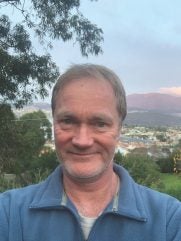
Angus Swindon started his career in the irrigation sector in 1990, and soon moved into the dam engineering field with stints in dam design, construction, dam safety management and asset ownership. Formerly Dam Safety Manager for Hydro Tasmania, Director for Entura, consultant with SMEC and designer with SunWater and the Rural Water Commission, he is now Director and Principal Consultant for Tasset Consulting.
With a degree in civil and agricultural engineering, an MBA and as a graduate of the Australian Institute of Company Directors, Swindon has been an associate member of ANCOLD for 15 years and a member of its community for 25 years. IWP&DC asked him how his experience and expertise has helped with his current ANCOLD role.
Solid understanding
Given that the safe management of dams involves a broad range of technical disciplines, and there are a variety of issues and problems to solve, Swindon believes it’s important to have a solid understanding of the various areas ANCOLD members work in, along with the issues they deal with.
“In this regard it helps to have worked across a range of technical and management areas as these can at times interact and even come into conflict with one another. Recognising this potential and being able to see a range of perspectives is helpful,” he said.
Thinking about the main issues facing the Australian industry, Swindon spoke about resourcing.
“Attracting, developing and retaining the best talent in a very competitive market, especially where some of the emerging technologies are very attractive and have had more obvious and immediate application elsewhere, is a real challenge,” he says. “This is not unique to dams engineering but does require a new way of approaching how we pitch the profession and engage people early enough in their career.”
In other areas, using risk as a basis for managing assets has been a huge step forward for the industry, he added. However, one outcome is that owners often find once they’ve addressed the highest risk issues, often with a lens of “low hanging fruit”, they find that to realise in order to further risk reductions, the analysis and decision making can become very complex and more challenging for businesses to process.
“If the target is to reduce risk so far as is reasonably practical, then we need to redouble our efforts and not give up when it becomes very challenging,” Swindon remarked.
“Societal awareness of the impacts of the built environment and the communities’ related willingness to accept the risks they are exposed to has reduced,” he went on to discuss. “So, organisations need to have a much better understanding of, and rationale for, the risk their assets and operations pose to the community, in the light of the benefits they’re able to provide both to their customers but also the wider community. Being more transparent and engaging with stakeholders is an area dam owners need to lean into,” he added.
Alongside, and sometimes in the wake of such increased societal expectation, has come increased regulation, both as a statutory requirement or industry imposed self-regulation. Swindon gives the example of the number of recent and well publicised mining tailings dam failures internationally. This has put a strong spotlight on the risk posed by tailings dams and the importance of applying strong technical and management standards, good governance and external oversight. Leading to the development of a Global Industry Standard on Tailings Management, it has put tailings management and governance front and centre and reflects the risk-informed approach taken in Australia.
“We will need to make sure our tailings guidance reflects this move appropriately,” Swindon says.
Reflection
IWP&DC asked Swindon to give an insight into what it means on a personal and professional level to be fulfilling his role at ANCOLD.
“I truly believe the long-standing reputation for leadership and quality products ANCOLD has as a peak representative member organisation is second to none” he said. “It is derived entirely through the dedicated and voluntary contribution of our members and associates. In a time when the call on scarce volunteer effort, especially amongst a cohort of very busy professionals with limited discretionary time and effort, the willingness of our people to contribute is unparallelled.
“It would be fair to characterise our field as relatively conservative (when the stakes are high and others are in harm’s way this is a necessary stance),” Swindon continued, “but I also reflect on progressive changes over recent years which see a huge shift towards empowering and watching our young professionals step up. They’re making an indelible mark on our strategic direction, with a more inclusive and diverse contribution where anyone can propose and champion a good idea. As an organisation we can try new ideas and models and be okay to discover not everything works.”
Swindon believes that with a strong and growing membership and a solid purpose and strategic direction, “it’s a great time to be engaged in the dams space in Australia”.
ANCOLD news
ANCOLD is currently refreshing and updating a number of its popular technical guidelines. These include the:
- Guidelines on Acceptable Flood Capacity for Dams (due early 2025).
- Guidelines on Dam Safety Management (due late 2025).
- New guidance on Dam Safety Emergency Planning (early 2025).
- Flood Detention Basins (late 2025).
- Guidelines on Outlet Work (progressive release commencing late 2025).
Next year will see the triennial joint conference with NZSOLD, to be held in Otautahi/Christchurch from 19-21 November 2025.
Swindon adds that they will soon be announcing dates and venues for the popular Water and Tailings Dams Operators Forums for 2025. Interested readers should keep an eye on the ANCOLD website www.ancold.org.au for updates and announcements.






